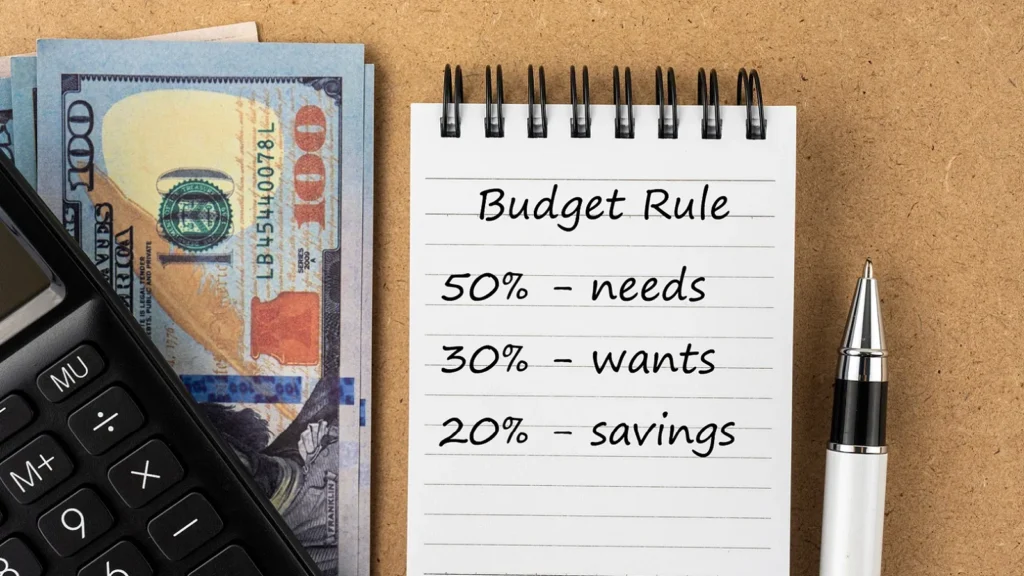Simple savings strategies are important for anyone who wants to manage their finances effectively and spend less so as to secure a prominent financial future. So for a more reliable savings plan, you need to follow these simple saving strategies.

There are several straightforward savings strategies for securing a good financial standing. However, we have good suggestions that can help you save money quickly.
5 Simple Savings Strategies
When it comes to saving money, simplicity is most important. Most people are scared of going through a difficult financial time. The following five strategies will be easy to implement and will help anyone, regardless of income, to start saving regularly.
1. Automate Your Savings
One of the most effective ways to save is to make it automatic. To save money, you can develop a system where you transfer a certain amount from your checking account to your savings account, this way, you won’t spend the money before you put it in the savings account.
This technique saves an aspect of income monthly without the need of having to plan it deliberately.
How it works: Every time there is a payday, a certain percentage of it is automatically moved to a savings account. It can be done in the bank itself or using some applications such as Chime or Capital that allow saving settings and user preferences.
Why it works: You’re less likely to miss the money if it’s never in your spending account in the first place.
2. Use the 50/30/20 Rule
The 50/30/20 rule is an excellent way to divide your income to enable you to live a comfortable life. It divides your after-tax income into three categories:
- 50% for needs: These are your basic needs, such as shelter, food, transport, and other necessities, including combined utility bills.
- 30% for wants: This includes the costs of parts of our spending that are not necessary, such as eating at restaurants, going to theaters or movies, and taking tours, among others.
- 20% for savings: This is either saved or used to pay previous credit balances.
If you follow this rule, you’ll be able to build the habit of saving money and still be able to spend money on the necessities you need and some of the things you want.
3. Cut Unnecessary Expenses
Many people have hidden expenses that can be reduced or eliminated. This could be such things as a remainder on subscription services that you do not use or frequent eating out or spur-of-the-moment buys.
So if you know these expenditures affect your quality of life and cut or reduce them alternatively, you will save without necessarily adjusting your comfort.
How to get started: He/she should also run through the bank or credit card statements for the month to identify regular debits. Reduce the number of magazines and newspapers you require and limit the number of times you go out to eat or to do some shopping.
4. Create a Savings Goal
Having a clear savings goal gives you a reason to save and can help motivate you to stick to your savings plan. Whether it’s saving for a down payment on a house, an emergency fund, or a vacation, knowing exactly what you’re working toward can make the process easier.
- How to set a goal: Identify what you’re saving for and calculate how much you need. Break that amount down into manageable monthly or weekly savings targets. Track your progress over time to stay motivated.
5. Use Cash for Discretionary Spending
It’s easy to overspend when you’re using credit or debit cards. To curb impulsive spending, try using cash for discretionary expenses like entertainment, dining out, or shopping. By physically seeing how much you’re spending, you’ll be more mindful of your purchases.
- How it works: At the beginning of the week or month, withdraw a set amount of cash for non-essential expenses. Once the cash is gone, you’ll know you’ve hit your limit for the period, preventing overspending.
How Much Should I Save Each Month?

It all depends on several factors, such as earnings, financial objectives, and expenditures at the moment. On the other hand, most monetary scholars advise that you should at least put aside 20% of your monthly paycheck.
This is in concordance with what was said concerning the 50/30/20 rule developed earlier, whereby 20% of the earnings is accorded to saving and paying off balances on credit.
- Short-term goals: If you’re saving for a specific short-term goal, such as a vacation or a new gadget, determine how much you need and divide that by the number of months until you reach your goal. This will give you a clear monthly savings target.
- Emergency fund: The website suggests that one must set aside anything between three months and six months of his living expenses for an emergency fund. They may help you estimate the amount you require by determining your necessary spending for the month and multiplying that sum by the required number of months.
- Long-term goals: In case of planning a retirement or any other other major financial plan to be met, you might wish to speak to a professional of the field to determine how much you need to save with regard to your expected standards of living upon retirement.
Should I Pay Off Debt or Save Money First?
You only need to prioritize your options and know which serves you better. If you have more debt, then clear your debts and then save more. Also, you can save while paying off your debt if your income is large enough to carry both at the same time.
However, you need to consider the following factors when planning what to start with:
- High-interest Debt: If you have high-interest debt, for instance, credit card debt, it is always advisable to pay off this type of balance. The cost of this kind of debt can skyrocket, meaning that you would have little to put into your savings box. But it is beneficial to keep a little of emergency savings, at least a thousand dollars while paying the accounts’ balance.
- Low-interest Debt: If for instance, your debt has a relatively smaller interest rate charge like a mortgage or a student’s loan accreditation you may think of a balance between repaying the debt and saving. For instance, we could spend 30 percent of our income on paying our loans and the rest 70 percent on saving.
Finally, living debt-free and building strong savings accounts should be harmonized at an appropriate time whether during an emergency or the achievement of other future ambitions.
8 Simple Savings Strategies

In addition to the five strategies outlined earlier, here are eight more practical ways to save money that anyone can implement:
- Track Your Spending: This is because when you track your spending you are in a position to realize where you can trim your expenses. Budgeting apps such as Mint help to track your expenses or you can bring manual records after a particular month.
- Meal Plan: Rather than going out to restaurants or picking up fast food and take-out meals, make a schedule for yourself and shop accordingly. Second, it cuts costs and prevents food loss.
- Take Advantage of Sales and Discounts: Shop during sales events or use coupons and cashback apps like Rakuten to save on purchases. Compare prices online before making a significant purchase.
- Set Aside Windfalls: If you had some extra money by chance, like bonus money or a tax refund, save the money instead of using the money.
- Use Energy-efficient Products: Reduce your electricity bills by replacing your old appliances and traditional bulbs with new and efficient ones respectively. As they say, the little drop of water makes the big hole in an hourglass.
- Sell Unused Items: Go through your home and identify items you no longer use. Sell them online or in a garage sale and add the profits to your savings.
- Avoid Impulse Buys: Wait 24 hours before making an unplanned purchase. This cooling-off period can help you avoid impulse spending.
- Set a No-Spend Day: Designate one day a week where you don’t spend any money. This can help reduce unnecessary spending and increase your awareness of your financial habits.
Conclusion
Looking at pretty basic solutions, you can take control of your financial state and begin the process of constructing a better tomorrow.
It is possible to start saving money every month by automating your savings, eliminating superfluous expenses, and watching how much you spend.
Further, there are fundamental things such as saving strategy, identifying how much to save, when to pay off, and how to plan these things that will enable one to attain the financial goals easily.







